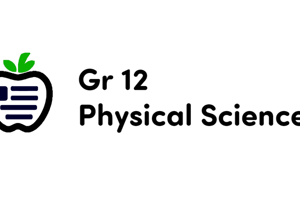Podcast
Questions and Answers
What is the product formed when compound A (C4H8) reacts with hydrogen bromide?
What is the product formed when compound A (C4H8) reacts with hydrogen bromide?
- C4H11Br
- C4H9Br (correct)
- C4H10
- C5H9
What type of reaction is involved when compound B (C4H9Br) reacts with ammonia?
What type of reaction is involved when compound B (C4H9Br) reacts with ammonia?
- Substitution reaction (correct)
- Esterification reaction
- Addition reaction
- Elimination reaction
What is the compound C formed from the reaction between compound B and ammonia?
What is the compound C formed from the reaction between compound B and ammonia?
- C4H8N
- C4H9NH2 (correct)
- C4H10N
- C5H10N
What is the product formed when compound C reacts with ethanoyl chloride?
What is the product formed when compound C reacts with ethanoyl chloride?
What happens when compound F is refluxed in acidified potassium dichromate?
What happens when compound F is refluxed in acidified potassium dichromate?
Which compound isolated (compound G) after refluxing compound F is slightly acidic?
Which compound isolated (compound G) after refluxing compound F is slightly acidic?
What is the product formed when compound G reacts with phosphorus pentachloride?
What is the product formed when compound G reacts with phosphorus pentachloride?
Which functional group is present in compound D (C6H13NO) formed from the reaction with ethanoyl chloride?
Which functional group is present in compound D (C6H13NO) formed from the reaction with ethanoyl chloride?
What type of reaction occurs when amides react with water in the presence of an acid catalyst?
What type of reaction occurs when amides react with water in the presence of an acid catalyst?
What are the substances formed when ammonia reacts with an acyl chloride?
What are the substances formed when ammonia reacts with an acyl chloride?
Flashcards are hidden until you start studying
Study Notes
Addition-Elimination Reactions
- Addition-elimination reaction mechanism applies to reactions between nucleophiles and acyl chlorides, acid anhydrides, amides, amino acids, and carboxylic acids.
Acyl Chlorides
- Acyl chlorides are extremely reactive and react with moisture in the air to form carboxylic acids, releasing HCl gas.
- Reaction with water: RCOCl + H2O → RCOOH + HCl
- Reaction with alcohols: RCOCl + ROH → RCOOR + HCl
- Advantage of using acyl chlorides for esterification: 100% yield
- Disadvantage: releases toxic fumes of HCl and requires very dry conditions.
Compound A, B, and C
- Compound A (C3H5OCl) is a liquid that fumes in air and reacts violently with water to form Compound B (HCl) and a solution of Compound C (C3H6O2).
- pH of the mixture is 1.
Acid Anhydrides
- Acid anhydrides react similarly to acyl chlorides through nucleophilic addition-elimination reactions.
- Reaction with water: (RCO)2O + H2O → 2RCOOH
- Reaction with alcohols: (RCO)2O + ROH → RCOOR + RCOOH
- Advantage of using acid anhydrides over acyl chlorides: no release of toxic HCl gas.
Carboxylic Acids
- Carboxylic acids react with alcohols through acid-catalyzed nucleophilic addition-elimination reactions.
- Reaction: RCOOH + ROH → RCOOR + H2O
- Importance of removing water from esterification reactions: to prevent reversal of the reaction.
Amides
- Amides contain the C=O and –NH2 functionalities and can be synthesized by reacting ammonia with an acyl chloride or acid anhydride.
- Reaction: RCOCl + NH3 → RCONH2 + HCl
- N-substituted amides can be synthesized by reacting an amine with an acyl chloride.
- Amides react with water in the presence of an acid catalyst to form a carboxylic acid and ammonia.
Synoptic Questions
- Various reaction mechanisms and syntheses of compounds involving acyl chlorides, acid anhydrides, amides, and carboxylic acids.
Studying That Suits You
Use AI to generate personalized quizzes and flashcards to suit your learning preferences.




